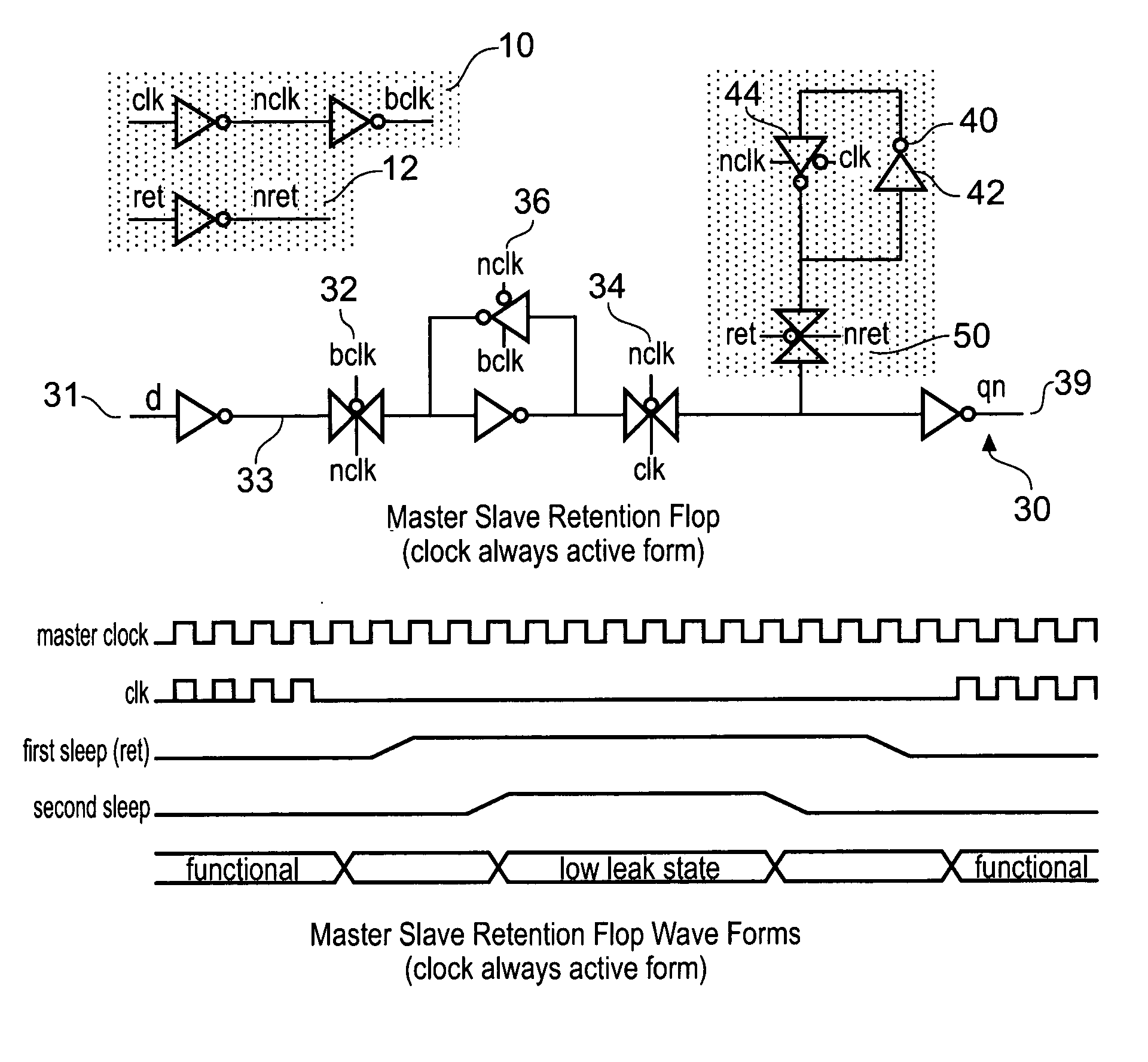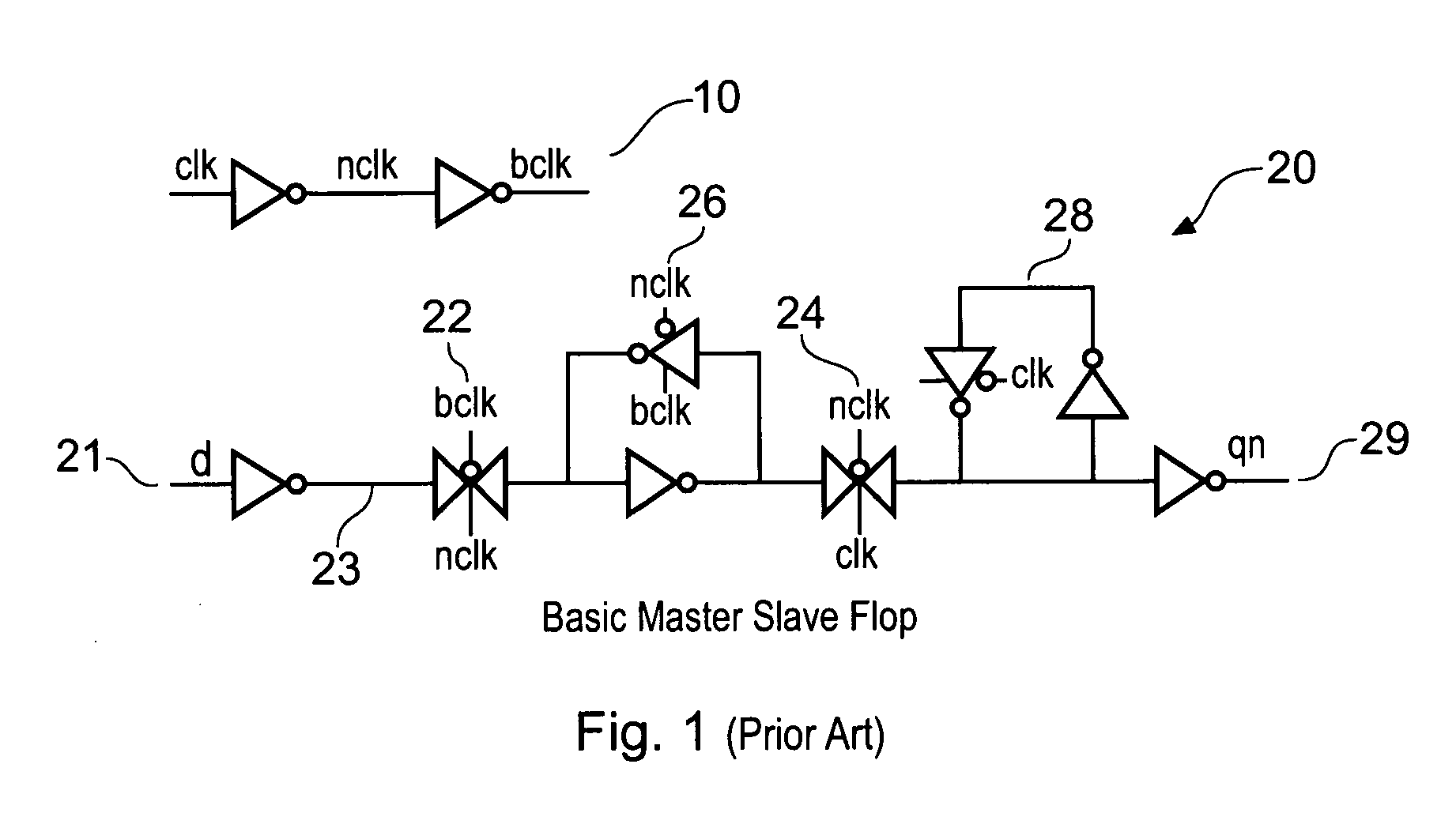Data retention in operational and sleep modes
- Summary
- Abstract
- Description
- Claims
- Application Information
AI Technical Summary
Benefits of technology
Problems solved by technology
Method used
Image
Examples
Embodiment Construction
[0062]FIG. 1 shows in schematic form a basic master slave flip flop according to the prior art. This basic master slave flop 20 has a clock distribution means 10 which comprises a plurality of inverters operable to deliver different clock signals, clk, nclk an inverted form of clk, and bclk an inverted form of nclk. The basic master slave flop has a forward data path 23, between data input 21 and data output 29. This forward data path takes data from the input to a master latch 26 via transmission gate 22 and to slave latch 28 via transmission gate 24. Transmission gates 22 and 24 are tristateable devices able to provide a low impedance data path or a high impedance data path depending on the clock values at their inputs. Thus, they act to either isolate the latches or to allow transmission of data to them.
[0063]FIG. 2 shows a master slave retention flop 30 according to an embodiment of the present invention. This is an adaptation of the flop of FIG. 1 and is able to provide data r...
PUM
 Login to View More
Login to View More Abstract
Description
Claims
Application Information
 Login to View More
Login to View More - R&D
- Intellectual Property
- Life Sciences
- Materials
- Tech Scout
- Unparalleled Data Quality
- Higher Quality Content
- 60% Fewer Hallucinations
Browse by: Latest US Patents, China's latest patents, Technical Efficacy Thesaurus, Application Domain, Technology Topic, Popular Technical Reports.
© 2025 PatSnap. All rights reserved.Legal|Privacy policy|Modern Slavery Act Transparency Statement|Sitemap|About US| Contact US: help@patsnap.com



